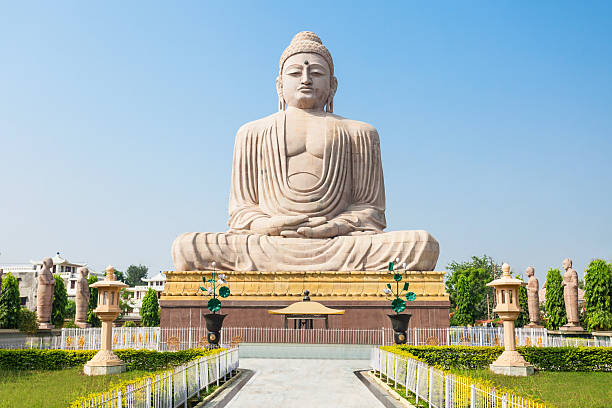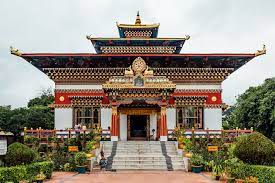- Private car and driver in Delhi / India
- +91-8447445445
- info@discoverindiabycar.com sugar.ankit@yahoo.com
 +91-9818434712
+91-9818434712
Bodh Gaya
Bodh Gaya, located in the Gaya district of Bihar, is one of the most sacred Buddhist pilgrimage sites in the world. It is the place where Gautama Buddha, the founder of Buddhism, attained enlightenment under the Bodhi Tree. Bodh Gaya is a serene and spiritual town that attracts devotees, spiritual seekers, and curious travelers from all corners of the globe. The town’s peaceful ambiance, ancient monasteries, and the magnificent Mahabodhi Temple make it a significant center for Buddhist worship and meditation.
Climate
Bodh Gaya experiences a subtropical climate, characterized by hot summers and mild winters. Summers, from March to June, are hot and dry, with temperatures ranging from 25°C (77°F) to 45°C (113°F). Winter season, from November to February, brings cool temperatures, ranging from 5°C (41°F) to 25°C (77°F). The monsoon season, from July to September, brings moderate to heavy rainfall, providing relief from the heat.
Location
Bodh Gaya is located in the northeastern part of India, approximately 110 kilometers (68 miles) south of Patna, the capital of Bihar. It is situated on the banks of the Niranjana River and is surrounded by tranquil landscapes. The town is well-connected by road, rail, and air, making it easily accessible for travelers.
History of Bodh Gaya
Bodh Gaya’s history is deeply intertwined with the life of Gautama Buddha. It was here, under the Bodhi Tree, that Buddha attained enlightenment and became the “Awakened One.” The sacred Bodhi Tree, believed to be a direct descendant of the original tree, continues to stand as a symbol of spiritual awakening.
Over the centuries, Bodh Gaya has remained a prominent destination for Buddhist pilgrimage and has witnessed the construction of numerous monasteries and temples by devotees from various Buddhist traditions around the world. The magnificent Mahabodhi Temple, a UNESCO World Heritage Site, stands as the most significant monument in Bodh Gaya, attracting devotees and visitors alike.
How to Travel Bodh Gaya?
To travel to Bodh Gaya, you can take a private car and driver from Patna or any nearby major city. Discover India by Car offers custom tour packages that include Bodh Gaya as a prominent destination, allowing you to explore the town and its spiritual landmarks. The tour packages can be tailored to include visits to attractions such as the Mahabodhi Temple, Bodhi Tree, and other monasteries and meditation centers.
Places to Visit in Bodh Gaya
Mahabodhi Temple
The Mahabodhi Temple is the holiest site in Bodh Gaya, symbolizing Buddha’s enlightenment. This magnificent temple complex, built in the 5th century, showcases a blend of ancient Indian and Buddhist architectural styles. Explore the temple, meditate in the tranquil surroundings, and witness devotees from around the world paying their respects.


Bodhi Tree
The sacred Bodhi Tree, located within the Mahabodhi Temple complex, is believed to be the direct descendant of the tree under which Buddha attained enlightenment. Spend quiet moments in its shade, reflecting on the teachings of Buddha and experiencing a deep sense of serenity.
Great Buddha Statue
Visit the Great Buddha Statue, also known as the 80-foot Buddha, situated near the Mahabodhi Temple. This impressive statue stands as a symbol of peace and compassion, and its serene presence evokes a sense of awe and reverence.


Royal Bhutan Monastery
Explore the Royal Bhutan Monastery, a beautiful monastery built in the traditional Bhutanese architectural style. Admire its intricate artwork, serene atmosphere, and the stunning view of the surrounding landscape.
Thai Monastery
Visit the Thai Monastery, a vibrant and ornate temple complex built in Thai architectural style. Marvel at the intricate carvings, golden decorations, and serene Buddha statues that adorn the temple.

Bodh Gaya’s spiritual significance, tranquil atmosphere, and ancient monuments make it a place of deep contemplation and spiritual growth, attracting visitors seeking a connection with Buddha’s teachings and the essence of Buddhism.








